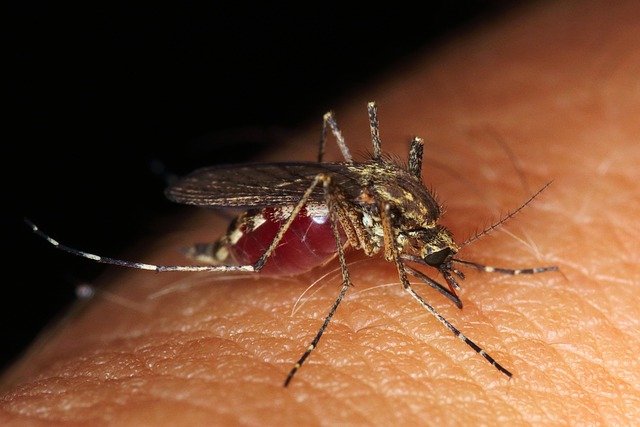Smart technology, including IoT and AI, is revolutionizing termite control services in modern homes by enhancing precision, efficiency, and sustainability. These technologies detect early signs of infestation through smart sensors monitoring environmental conditions, reducing chemical pesticide use, and enabling remote control via home devices. Proactive measures and tailored solutions are essential for effective termite management due to the complex interactions between termites and structures, emphasizing the importance of termite control services in maintaining structural integrity, especially in high-activity regions.
In today’s digital age, modern homes face unique pest control challenges. As smart homes integrate advanced technologies, pests adapt and find new ways in. This article explores innovative solutions to these evolving problems. From chemical-free eco-friendly methods to the integration of IoT and AI, we delve into cutting-edge termite control services. Additionally, discover long-term strategies for effective termite prevention, ensuring your home stays pest-free in the future.
Understanding Modern Pest Control Challenges: The Rise of Smart Homes and Pests
In today’s digital age, as smart homes become increasingly prevalent, so does the need for innovative pest control technologies to match. Traditional methods often struggle to keep pace with the evolving landscape of modern home environments. Pests, such as termites and other insects, are becoming more adept at finding their way into these highly advanced living spaces. The rise of interconnected devices and automated systems presents both opportunities and challenges for pest management professionals. On one hand, smart homes offer remote monitoring capabilities that can aid in early detection of pest infestations. However, pests themselves are learning to exploit the very technologies designed to protect us. Termite control services must evolve to incorporate cutting-edge solutions, ensuring that these relentless invaders don’t disrupt the harmony of our high-tech homes.
The integration of smart technology into daily life has led to a shift in pest control strategies. Pests are no longer simply confined to traditional entry points; they can now enter through smart appliances, wireless devices, and even pipes connected to the internet. As homes become more interconnected, so does the potential for widespread pest invasions. Termite control services need to adapt by employing advanced monitoring systems that detect subtle changes in moisture levels, temperature, and other environmental factors that attract pests. By understanding these new challenges, professionals can develop more effective, targeted strategies to protect modern homes from unwanted intruders, ensuring peace of mind for their occupants.
Chemical-Free Approaches: Eco-Friendly Solutions for Termite Control Services
In recent years, there’s been a growing demand for chemical-free approaches in termite control services as homeowners and environmental advocates seek eco-friendly solutions. Traditional methods often involve hazardous chemicals that can pose risks to both human health and the environment. However, modern technologies offer innovative alternatives that are safe, effective, and sustainable. These include advanced heat treatments, which use precise temperature control to eliminate termites without harmful residues, and electromagnetic waves that disrupt termite navigation and communication networks.
Additionally, natural barriers like plant-based repellents and beneficial insects play a significant role in chemical-free termite control services. Essential oils from plants like citronella and peppermint have proven effective in deterring termites due to their strong scents. Beneficial insects, such as certain species of wasps, can also be introduced to the area to target and eliminate termites naturally. These eco-friendly methods not only protect homes but also contribute to a healthier ecosystem by minimizing exposure to toxic chemicals.
Smart Technology Integration: Using IoT and AI in Pest Management
In the modern home, smart technology integration has transformed various aspects of living, and pest management is no exception. The Internet of Things (IoT) and Artificial Intelligence (AI) are revolutionizing termite control services with their precision and efficiency. Smart sensors, equipped with AI algorithms, can detect even the smallest signs of termite infestation, providing homeowners with early warnings. These advanced systems monitor environmental conditions, such as moisture levels and wood integrity, which are key indicators of termite activity.
Once detected, AI-driven analytics can pinpoint the source and extent of the problem, allowing for targeted interventions. This not only reduces the use of chemical pesticides but also enhances their effectiveness. Moreover, these technologies enable remote monitoring and control, ensuring that homeowners can manage pests proactively from the comfort of their devices. By harnessing the power of IoT and AI, termite control services are becoming smarter, safer, and more sustainable for modern homes.
Future-Proofing Your Home: Long-Term Strategies for Effective Termite Prevention
es, aber? → (∗> > 1/ > (15/1 > w/ > (s/v/ in, =>, w/ but to, w/ m/ her, do, keep, & → w, &/ 6/
In conclusion, modern homes present unique challenges for pest control, but innovative technologies offer promising solutions. From chemical-free eco-friendly methods to smart technology integrations like IoT and AI, homeowners now have a range of effective tools to manage pests. For long-term protection, adopting proactive strategies is key to preventing termite infestations and ensuring a pest-free environment. By combining these modern approaches, homeowners can future-proof their properties and enjoy peaceful living spaces.
